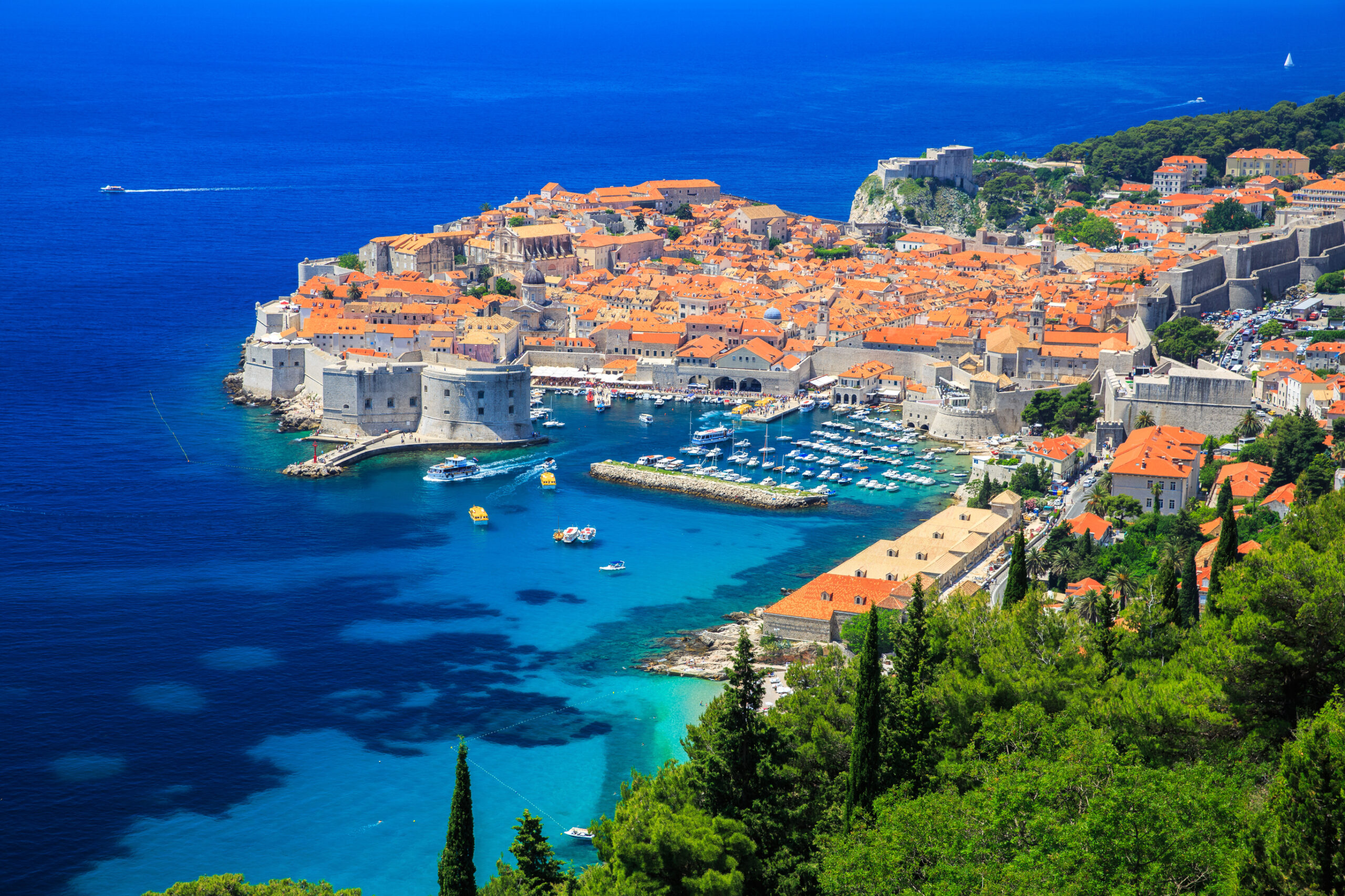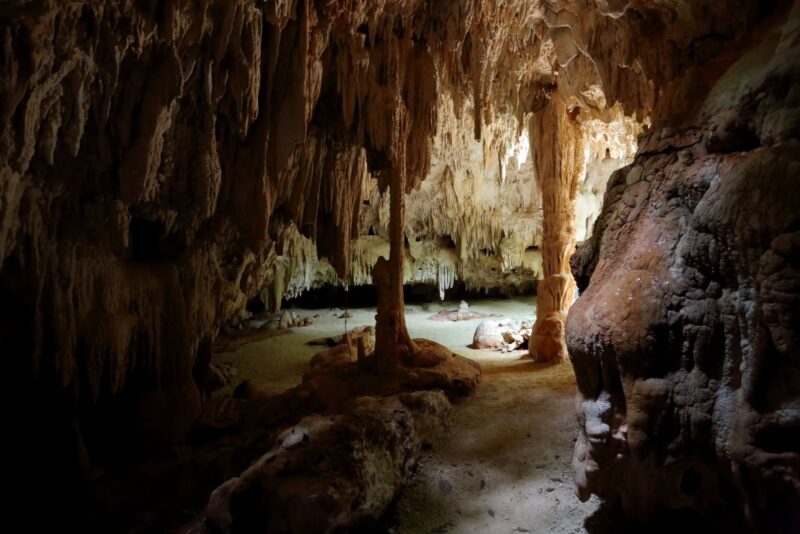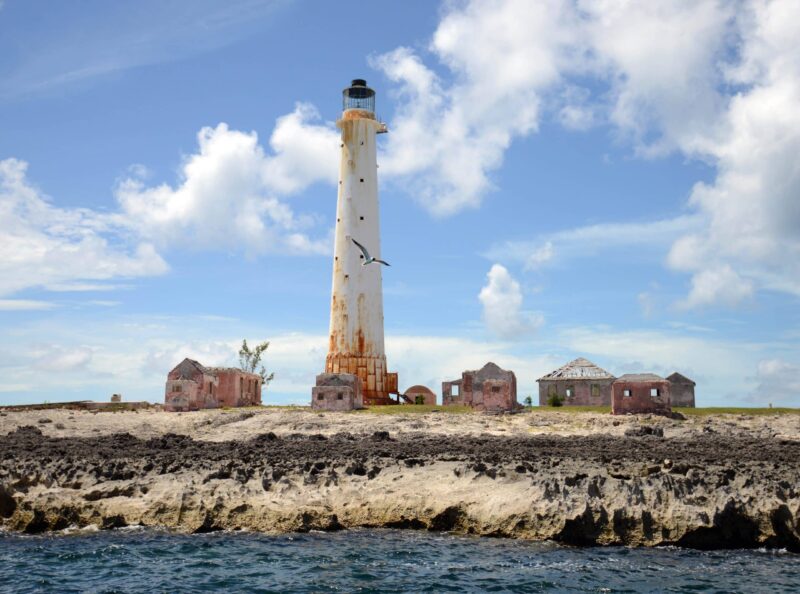Known as the Pearl of the Adriatic, Dubrovnik is a historic coastal city in Croatia. Its 16th-century walls, maze-like Old Town streets, and ancient churches offer breathtaking views of the sea. It’s also famous for its Game of Thrones film sites and as a popular tourist stop for cruisers.
Warmer months mean that the city’s storied walls are often packed with tourists. Many come from cruise ships, private yachts, or nearby cities for a taste of the Adriatic.
Yet in the fall and winter, fewer cruise ships and crowds occupy the city, giving visitors a chance to experience the Adriatic differently. Wander the nearly empty Old Town without bumping shoulders, linger over wine tastings in nearby Konavle, take a day trip to an oyster farm in Ston, or head to Cavtat for a slower-paced coastal village vibe with chic hotels. Here, our guide to how to see Dubrovnik in the off-season:
Explore Old Town
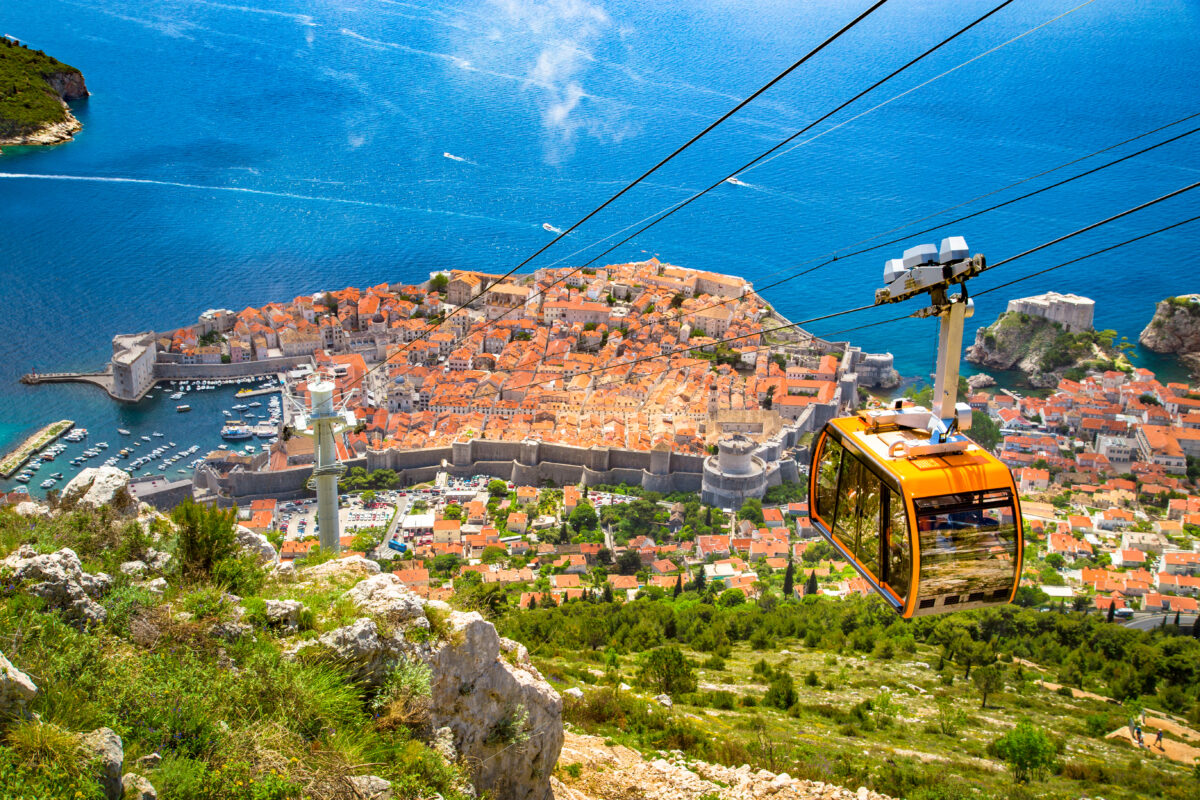
A UNESCO World Heritage Site, Dubrovnik’s 13th-century walls hold convents, fortresses, towers, and centuries of history. Stroll along the walls and see endless red-tiled roofs below, with gorgeous views of the Adriatic Sea all around.
Inside the city, the Jesuit Staircase is famous as the spot where Cersei Lannister took her Walk of Shame in Game of Thrones. Cobblestone streets hold ancient churches and bustling squares. Early morning and late afternoon offer fewer crowds, and small cafes and restaurants are everywhere for a coffee break, a plate of fresh seafood, or Mediterranean bites.
Banje Beach, just outside of Old Town, has a fine-dining restaurant and a beach club where you can spend an afternoon on a lounger relaxing. You can also take the Dubrovnik Cable Car to the top of Srd Hill for a bird’s-eye view of the city and surrounding area. There’s also Lokrum, a small, uninhabited island and nature reserve located a short ferry ride from Dubrovnik Old Town. Take the ferry over and check out the botanical gardens and the ruins of the Benedictine monastery built in medieval times. Hike to the island’s highest point, at 315 feet above sea level, to the Fort Royal Castle—built by the French during Napoleon’s occupation of Croatia. Or float in the salt lake, the island’s own “Dead Sea.”
Where to Stay
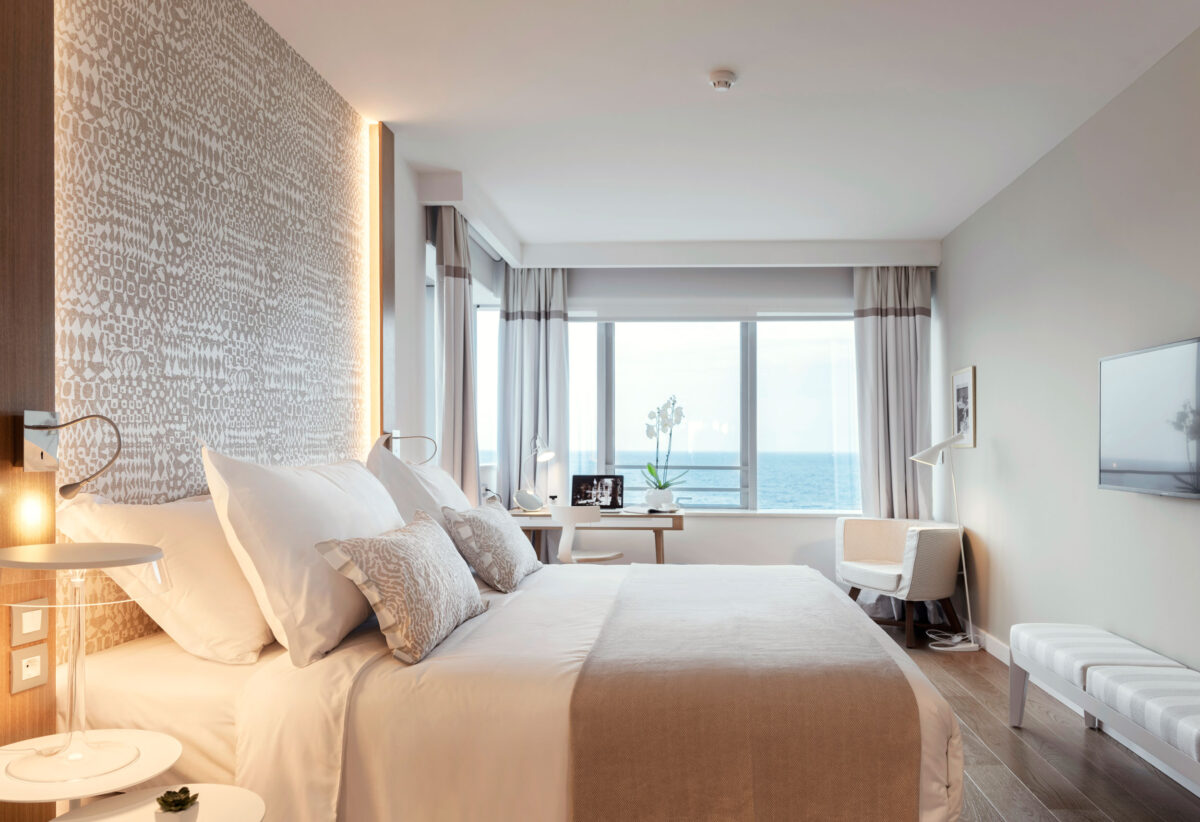
Just outside Old Town is Hotel Bellevue Dubrovnik, a luxe boutique property built into a cliffside. Floor-to-ceiling windows everywhere you turn give you dramatic views of the Adriatic, and a pebble beach below allows you to bask in the sun.
Rooms feature bright yet neutral color palettes, private balconies, contemporary touches, and, of course, floor-to-ceiling views of the sea. Vapor, one of the property’s two restaurants, is recommended by the Michelin Guide for its regional cooking, and Nevera, located down on the beach, is built into a cave for a romantic yet informal meal.
There’s also the Spice Lounge for a cocktail or afternoon coffee and the Wine Bar, with an extensive global wine list. It seems minor, but have your phone ready in the glass-walled elevator for sweeping views of the sea and beach as you head to your room.
Unwind in Cavtat
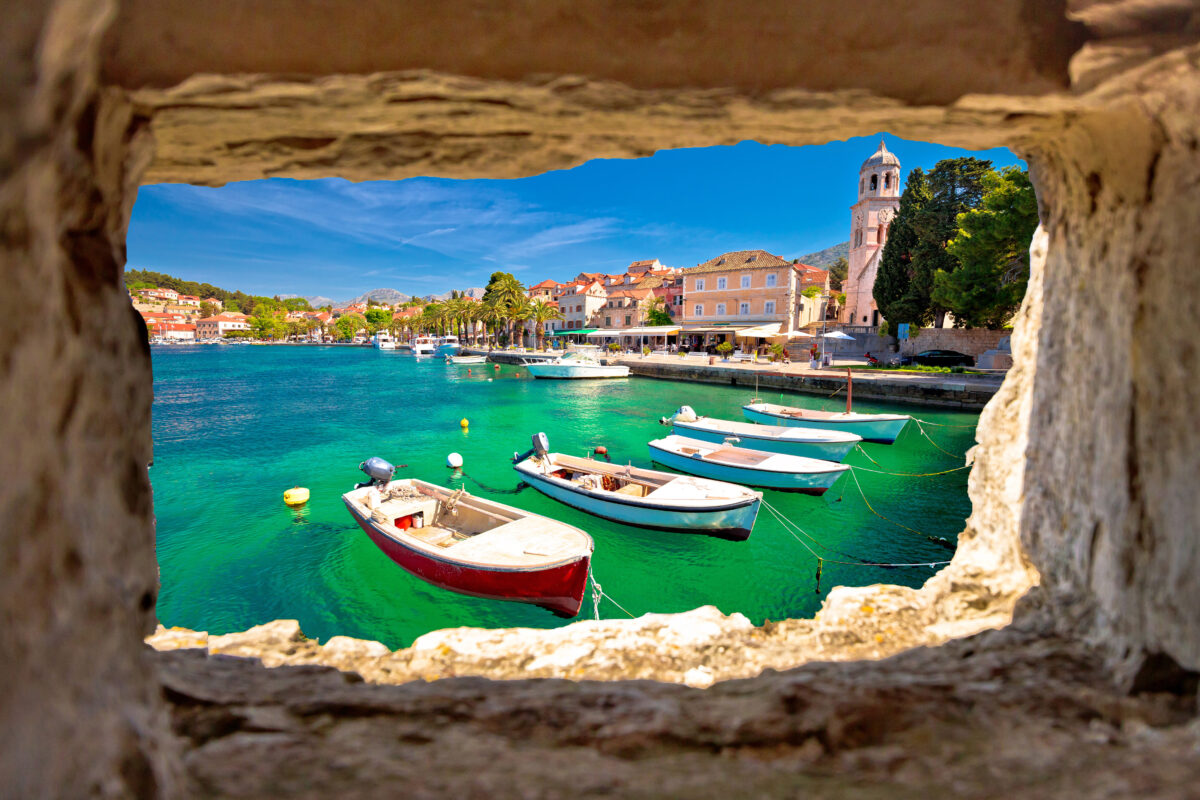
Just south of Dubrovnik is the small coastal town of Cavtat—a getaway from the crowds that’s often described as a St. Tropez before it became a hot spot. It’s close to the airport too, meaning visitors often choose to spend time here before heading home.
Here, you’ll find a slower pace of life and a waterfront promenade lined with churches, museums, palm trees, boutiques, and plenty of restaurants. Spend some time exploring, take a kayak along the calm shoreline, or hit the beach for a low-key afternoon.
Where to Stay
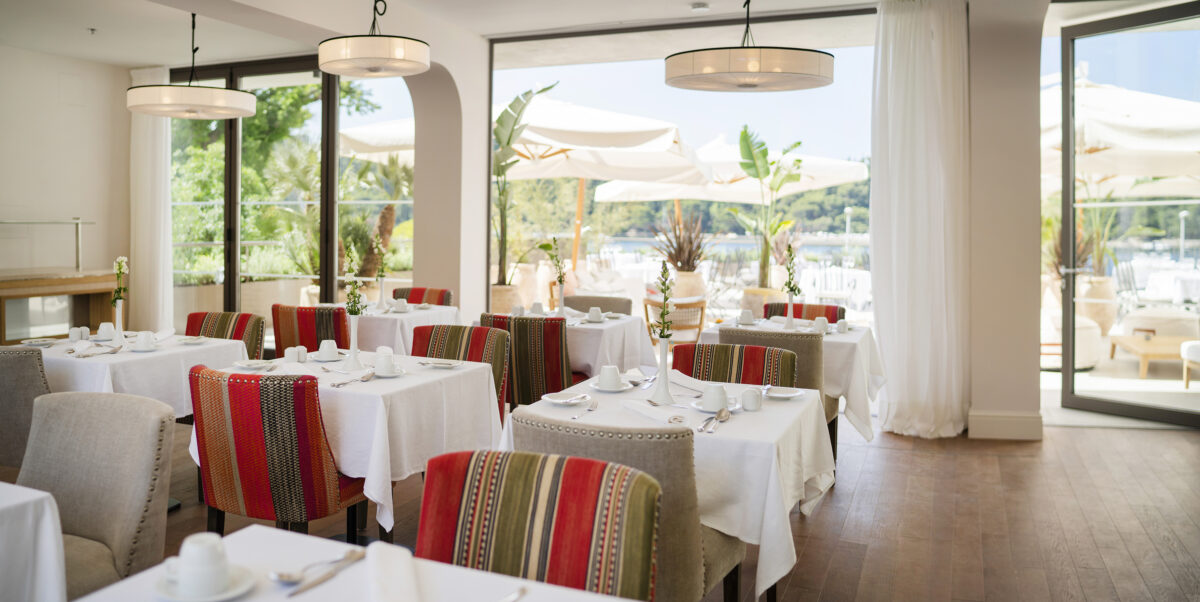
In the historic center of Cavtat is Hotel Supetar Cavtat, another fabulous boutique property. It’s even housed within a private mansion originally built in the 20th century on the remains of the ancient town of Epidaurum.
Rooms have garden and cobblestone street views and are complete with colorful wallpapers, bright tilework, and playful yet modern furnishings. Make sure to visit the Wine Bar, as Cavtat is in a prominent Croatian wine region.
On my visit, I did a guided wine tasting, where I sampled wine made from Dubrovnik Malvasia grapes from nearby Karaman Winery, which paired well with smoked cheese and fig jam. Other highlights included wines from Kutjevo Winery, one of the oldest wine cellars in Eastern Europe, and Plenković Winery, located in the central Dalmatia region.
Hop Along the Elaphiti Islands
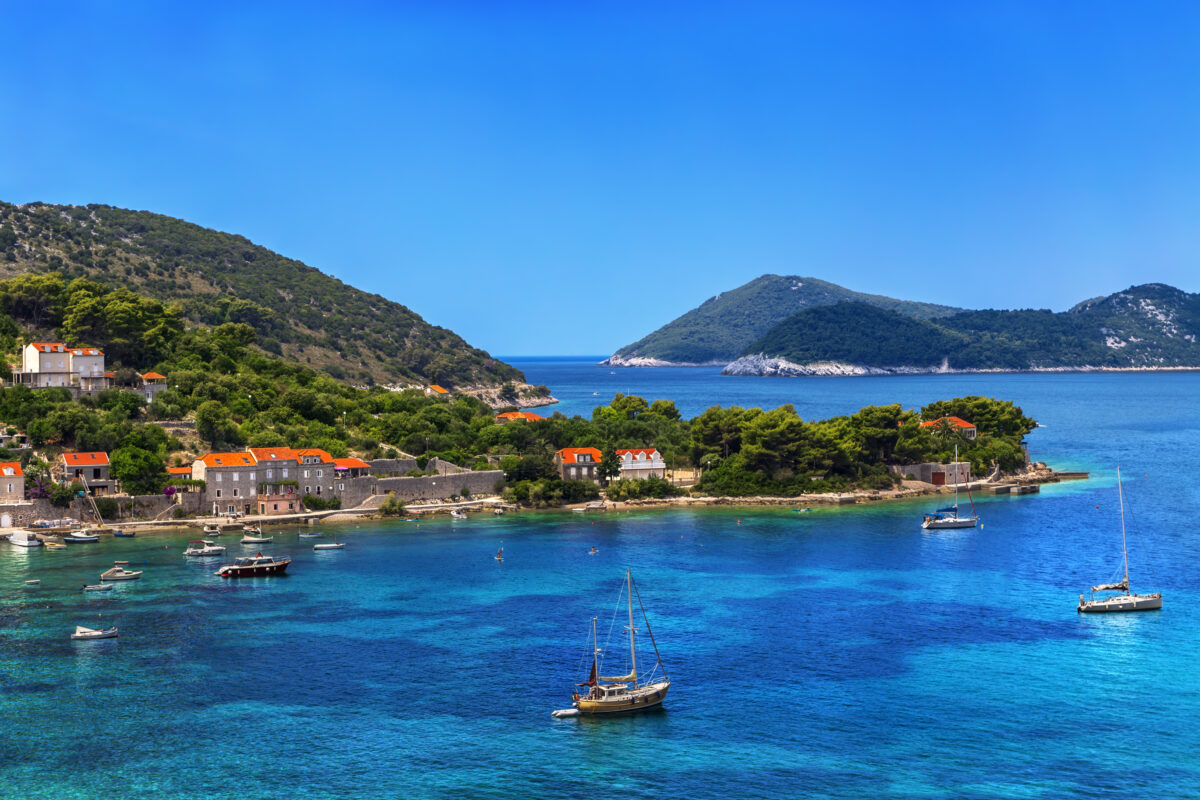
An archipelago near Dubrovnik, the Elaphiti Islands consist of 13 islands set within the sapphire and turquoise waters of the Adriatic Sea. Most islands are uninhabited, offering travelers empty beaches and bays for swimming.
During the 15th century, aristocratic Dubrovnik families summered on the Elaphiti Islands. Today, you can find remnants of these manors, villages, and charming local restaurants.
Three islands are inhabited—Šipan, Lopud, and Koločep—each offering a scenic stroll or a quiet lunch. Lopud is a must-see, as it is a car-free island and home to a historic Franciscan monastery. Koločep is also car-free and peaceful, with a beautiful walking path that connects its two main villages. Šipan is the largest of the islands, with tranquil bays, olive groves, and vineyards.
Where to Stay
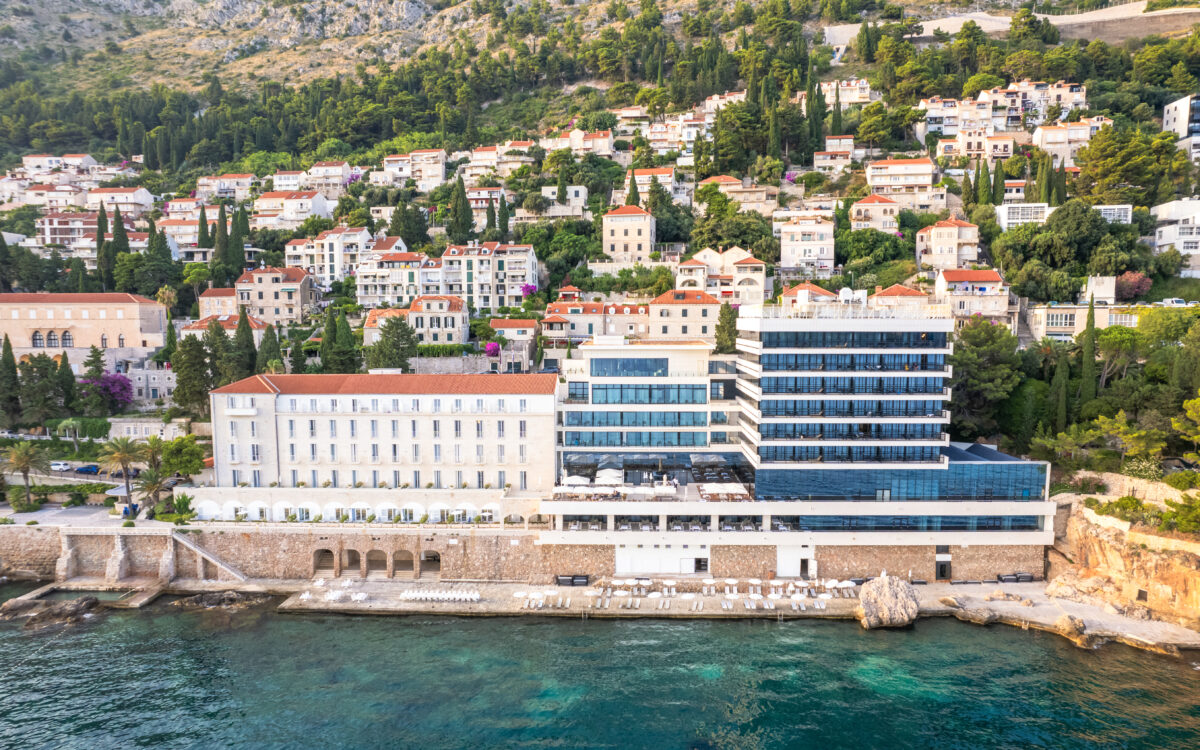
Hotel Excelsior Dubrovnik is a gorgeous property set against the Adriatic Sea, giving you views of Old Town without having to be within the bustling ancient walls. It has famously hosted celebrities such as Elizabeth Taylor and Queen Elizabeth II.
The hotel features contemporary rooms and suites with Adriatic views, a piano bar, a fine dining space, and a seaside terrace for stunning meals by the water. There’s also an indoor pool and spa, as well as an outdoor seawater pool that fills naturally from crashing waves. You can access the Adriatic directly here too, making ocean dips a breeze. Bonus points: The hotel will also coordinate private boat tours to the Elaphiti Islands.
Tour an Oyster Farm
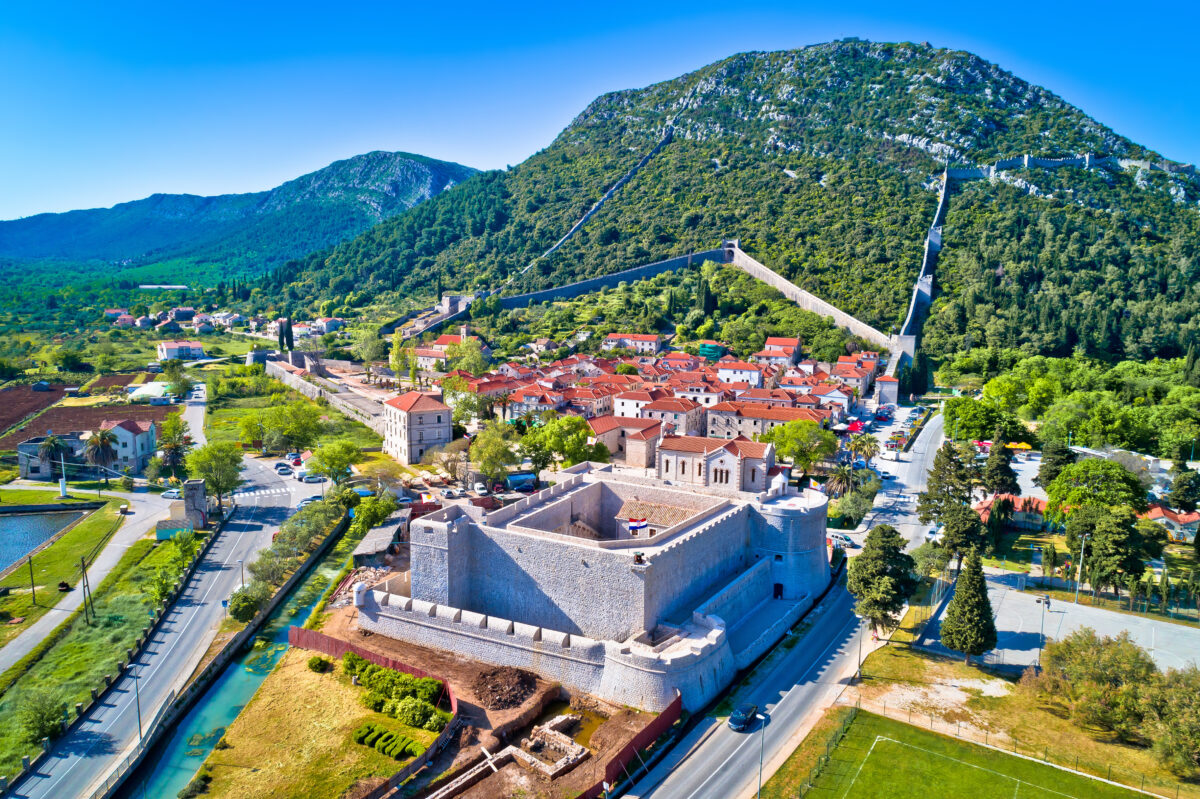
Once an important military fort of the Dubrovnik Republic, Ston was protected with five-kilometer-long defensive walls known as the Great Wall of Croatia. These walls guarded the salt pans that contributed to Dubrovnik’s wealth.
Stroll through town and see these walls climbing up the hillsides, or walk along them for views of the salt pans and surrounding landscape. Aside from housing one of the oldest salt mines in Europe, Ston is also known for its world-class oysters harvested from nearby Mali Ston Bay.
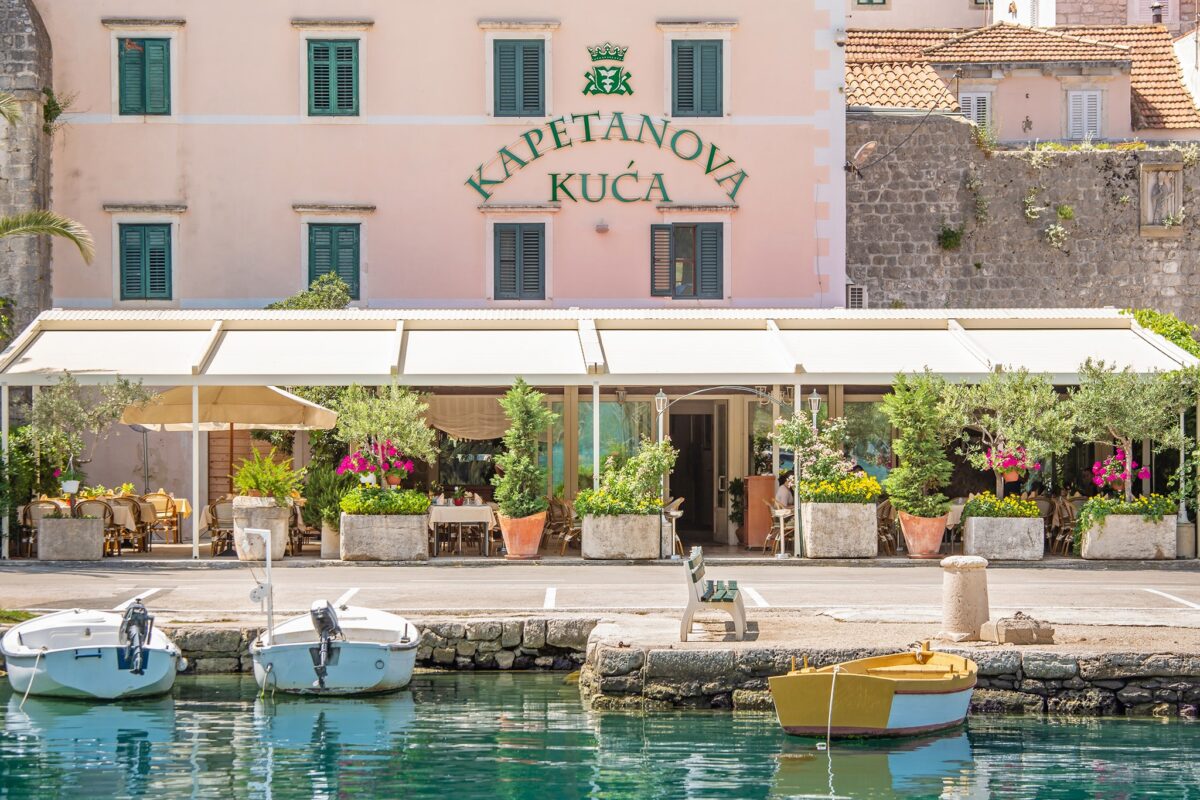
Oyster farming in the bay dates back to Roman times. Bivalve lovers have appreciated these specific oysters for centuries due to their fresh and clean taste, which comes from the bay’s mix of freshwater and seawater.
Enjoy them fresh off the half shell with lemon, or find them at restaurants, such as the waterfront Kapetanova Kuća in town. Adriatic Luxury Hotels can assist in planning a private tour of the Ston oyster farm, where a traditional fishing boat takes you to see the oysters and enjoy a tasting paired with Croatian wines.

